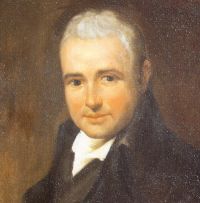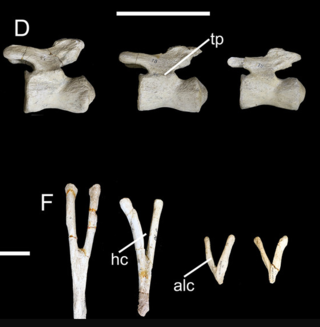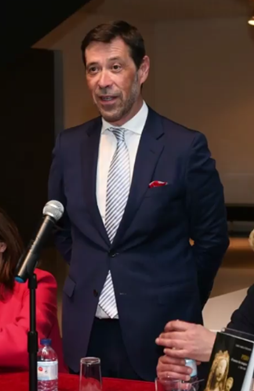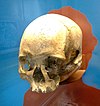
Domingos António de Sequeira was a famous Portuguese painter at the Royal Court of King John VI of Portugal.

The National Museum of Brazil is the oldest scientific institution of Brazil. It is located in the city of Rio de Janeiro, where it is installed in the Paço de São Cristóvão, which is inside the Quinta da Boa Vista. The main building was originally the residence of the House of Braganza in colonial Brazil, as the Portuguese royal family between 1808 and 1821 and then as the Brazilian imperial family between 1822 and 1889. After the monarchy was deposed, it hosted the Republican Constituent Assembly from 1889 to 1891 before being assigned to the use of the museum in 1892. The building was listed as Brazilian National Heritage in 1938 and was largely destroyed by a fire in 2018.

Soares dos Reis National Museum is a museum, currently housed in the Carrancas Palace situated in the civil parish of Cedofeita, Santo Ildefonso, Sé, Miragaia, São Nicolau e Vitória, in the northern Portuguese city of Porto.

The Museu Nacional de Arte Antiga, also known in English as the National Museum of Ancient Art, is a Portuguese national art museum located in Lisbon. With over 40,000 items spanning a vast collection of painting, sculpture, goldware, furniture, textiles, ceramics, and prints, MNAA is one of the most visited museums in Portugal.

Baurutitan is a genus of sauropod dinosaur that lived during the Late Cretaceous in what is now Brazil. The type species, Baurutitan britoi, was described in 2005 by Kellner and colleagues, although the fossil remains had already been discovered in 1957. Baurutitan is classified as a lithostrotian titanosaur, and is distinguished from related genera based on its distinctive caudal vertebrae. This South American dinosaur was found in the Serra da Galga Formation near Uberaba, in the Brazilian state of Minas Gerais.

The National Historical Museum of Brazil was created in 1922, and possesses over 287,000 items, including the largest numismatic collection of Latin America. The architectural complex that houses the museum was built in 1603 as the St. James of Mercy Fort; earlier structures date back to 1567, erected by order of King Sebastian I of Portugal. In 1693, the Calaboose Prison, for slaves, was built. In 1762, the Casa do Trem was added as a depot of weapons and ammunition. The last additions are the War Arsenal (1764) and the Barracks (1835).

The Museu Nacional de Belas Artes is a national art museum located in the city of Rio de Janeiro, Brazil. The museum, officially established in 1937 by the initiative of education minister Gustavo Capanema, was inaugurated in 1938 by President Getúlio Vargas. The museum collection, on the other hand, takes its rise in the transfer of the Portuguese Court to Brazil in the early 19th century, when King John VI brought along with him part of the Portuguese Royal Collection. This art collection stayed in Brazil after the King's return to Europe and became the core collection of the National School of Fine Arts. When the museum was created in 1937, it became the heir not only the National School collection, but also of its headquarters, a 1908 eclectic style building projected by Spanish architect Adolfo Morales de los Ríos.

Luzia Woman is the name for an Upper Paleolithic period skeleton of a Paleo-Indian woman who was found in a cave in Brazil. The 11,500-year-old skeleton was found in a cave in the Lapa Vermelha archeological site in Pedro Leopoldo, in the Greater Belo Horizonte region of Brazil, in 1974 by archaeologist Annette Laming-Emperaire.

Paço de São Cristóvão was an imperial palace located in the Quinta da Boa Vista park in the Imperial Neighbourhood of São Cristóvão, Rio de Janeiro, Brazil. It served as residence to the Portuguese royal family and later to the Brazilian imperial family until 1889, when the country became a republic through a coup d'état deposing Emperor Pedro II. The palace briefly served as a public building by the provisional government for the constituent assembly of the first republican constitution. It housed the major part (92.5%) of the collections of the National Museum of Brazil, which, together with the building, were largely destroyed by a fire on 2 September 2018.
The Angra dos Reis meteorite is the type specimen of the angrite group. It was observed when it fell to earth in 1869.

The National Museum of Brazil was heavily damaged by a large fire which began about 19:30 local time on 2 September 2018. Although some items were saved, it is believed that 92.5% of its archive of 20 million items were destroyed in the fire as around 1.5 million items were stored in a separate building, which were not damaged.

The Balbino de Freitas Archaeological Collection was one of the collections on display in National Museum of Brazil, in Rio de Janeiro. It reunited works belonging to the house of Balbino Luiz de Freitas, one of the first archaeological collections of Brazil. The collection was listed by the IPHAN in 1938.

The Werner Collection is one of the collections on display at the National Museum of Brazil, in Rio de Janeiro. The collection gathers around 60 rare minerals obtained in the 18th century from the Freiberg Mining Academy, Germany, by the Portuguese nobleman António de Araújo e Azevedo. The name of the collection is due to the main researcher of the German academy, scientist Abraham Gottlob Werner. The collection came to Brazil in the 19th century, brought by the Royal Family, who was escaping from the Napoleonic invasion, and was initially sent to the Royal Military Academy, being moved to the Royal Museum in 1819. It is considered that it was the first collection to compose the National Museum.
Cláudia Rodrigues Ferreira de Carvalho, also Claudia Rodrigues-Carvalho, is a Brazilian archaeologist and is the director of the Science House of the Federal University of Rio de Janeiro (UFRJ) since 2018. She was the director of the UFRJ from 2010 to 2018. de Carvalho is also assistant professor of the Sector of Biological Anthropology of the Department of Anthropology of the National Museum.

Aratasaurus is an extinct genus of basal coelurosaurian theropod dinosaur from the Early Cretaceous (Aptian) Romualdo Formation of Brazil. The genus contains a single species, A. museunacionali, known from a partial right leg. Aratasaurus represents the only tetrapod fossil known from the lower levels of the Romualdo Formation.

The Bahia Museum of Art is a museum located in Salvador de Bahia, Brazil. This museum is one of the oldest museums in the State of Bahia.

Peirópolis is a rural district located in Uberaba, Brazil. The site is known for its significant paleontological discoveries, particularly the abundant fossil deposits dating back to the Late Cretaceous period. These fossils were first uncovered in the mid-1940s during infrastructure-related activities in the vicinity. In the early 20th century, Peirópolis served as a limestone producer.

António Manuel Filipe Rocha Pimentel is a Portuguese academic and art historian currently the director of the Calouste Gulbenkian Museum in Lisbon, Portugal.
The Brazilian Institute of Museums is an autonomous body linked to the Ministry of Culture, the managing body of the National Policy of Museums. Created by Law No. 11.906, on January 20, 2009, one of its main objectives is the promotion of programs and projects aimed at the organization, management, and development of museums. It works to improve the physical and structural conditions of museums, to promote greater articulation and exchange within the museum sector, and to expand and democratize public access to memory institutions. As museums are places of social transformation and development, another priority of the institute is to encourage and create tools that enable social empowerment for all those who have a desire for memory.




































